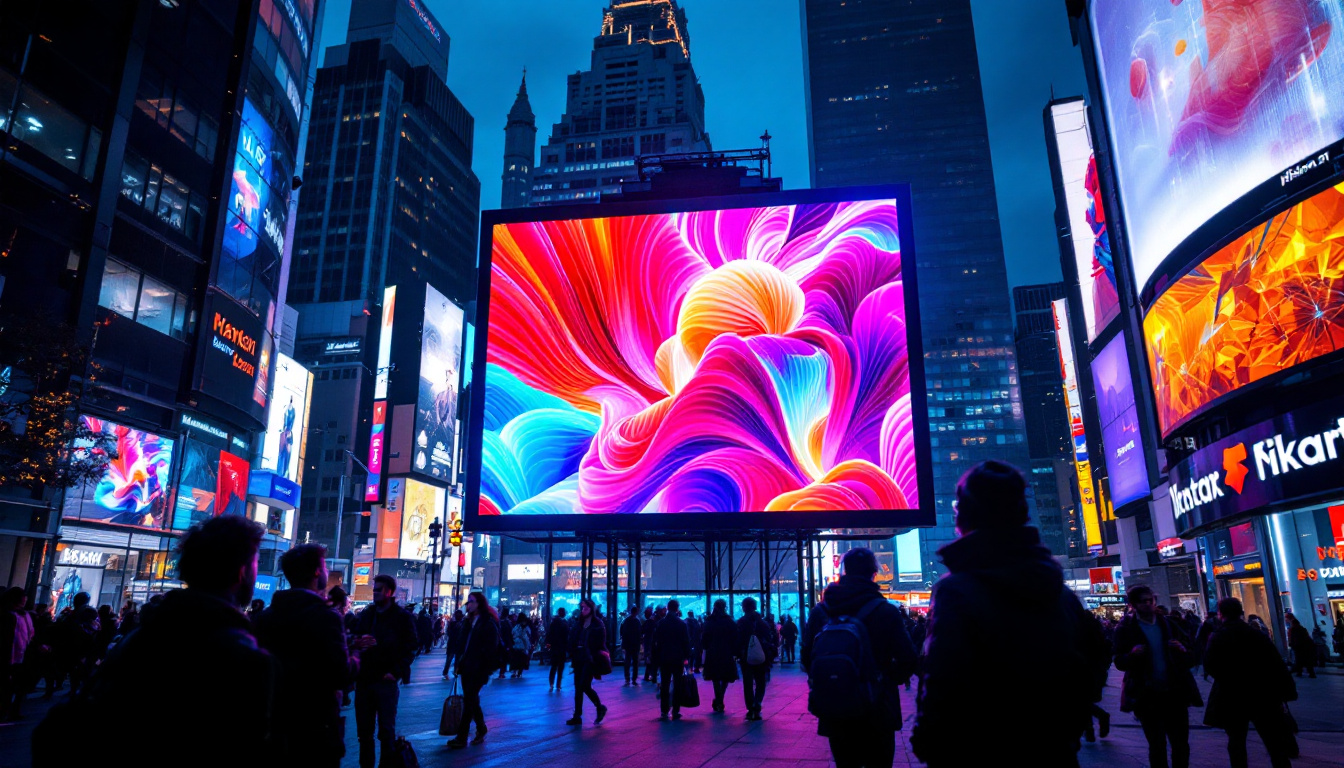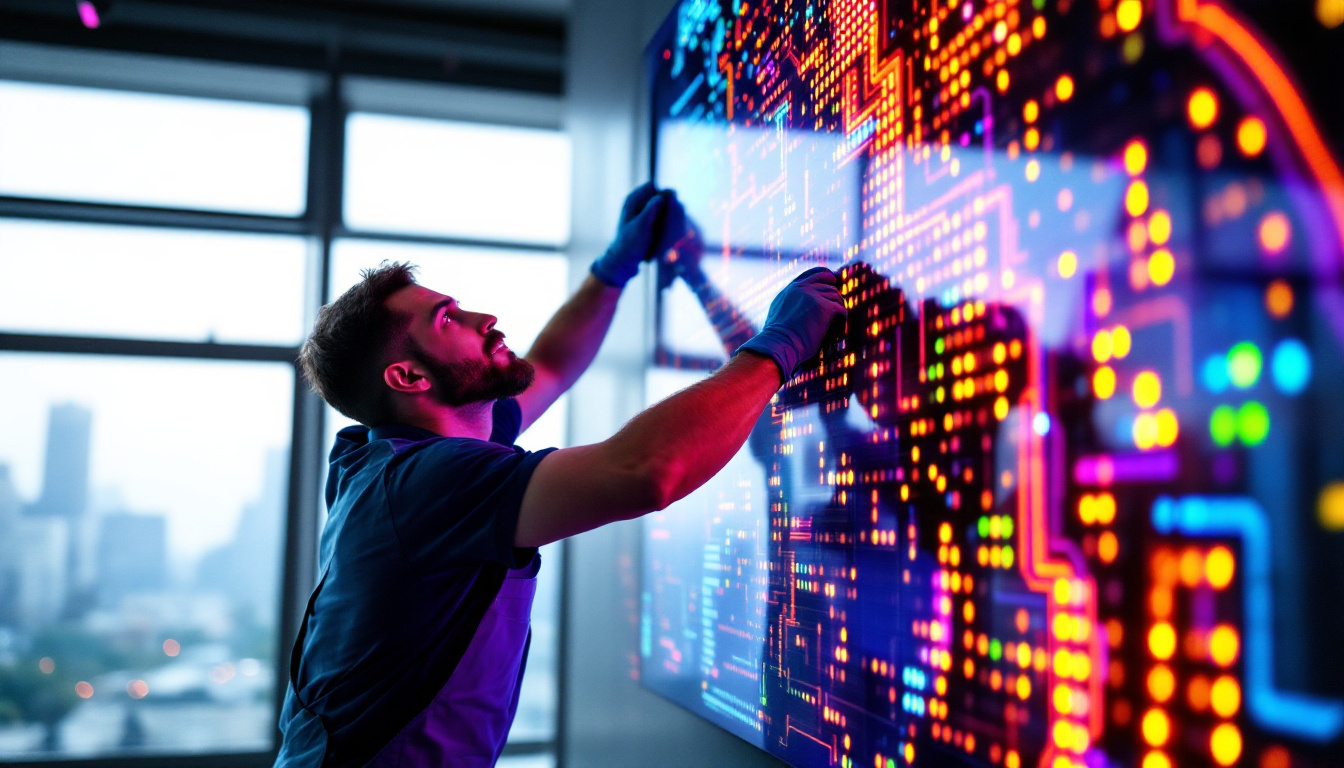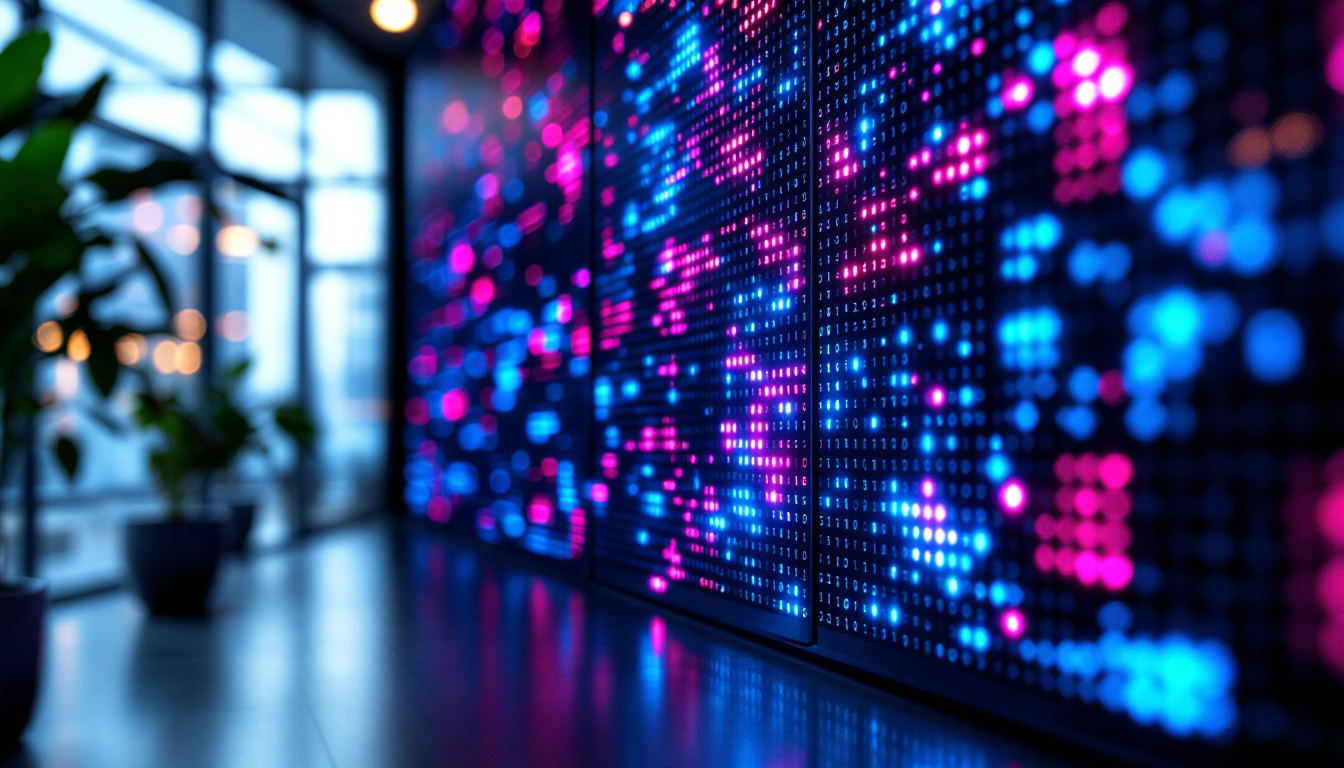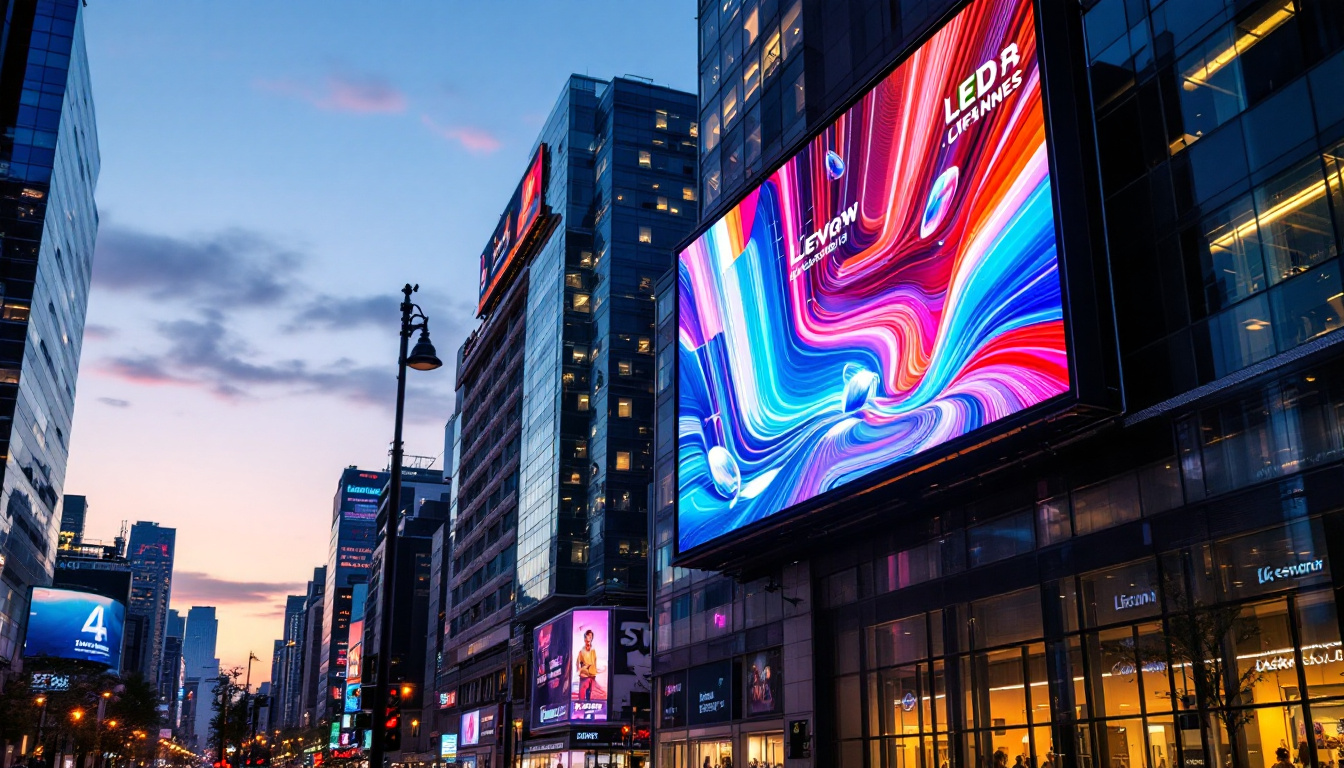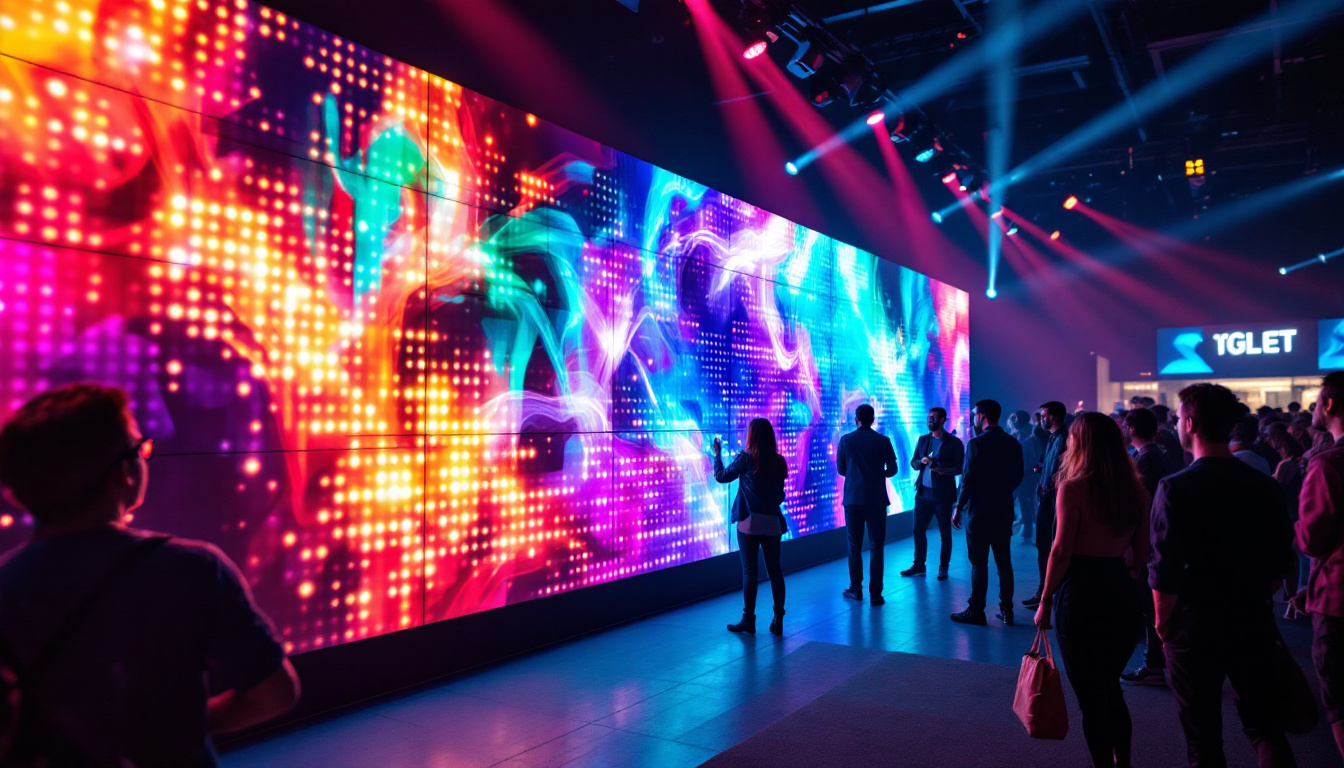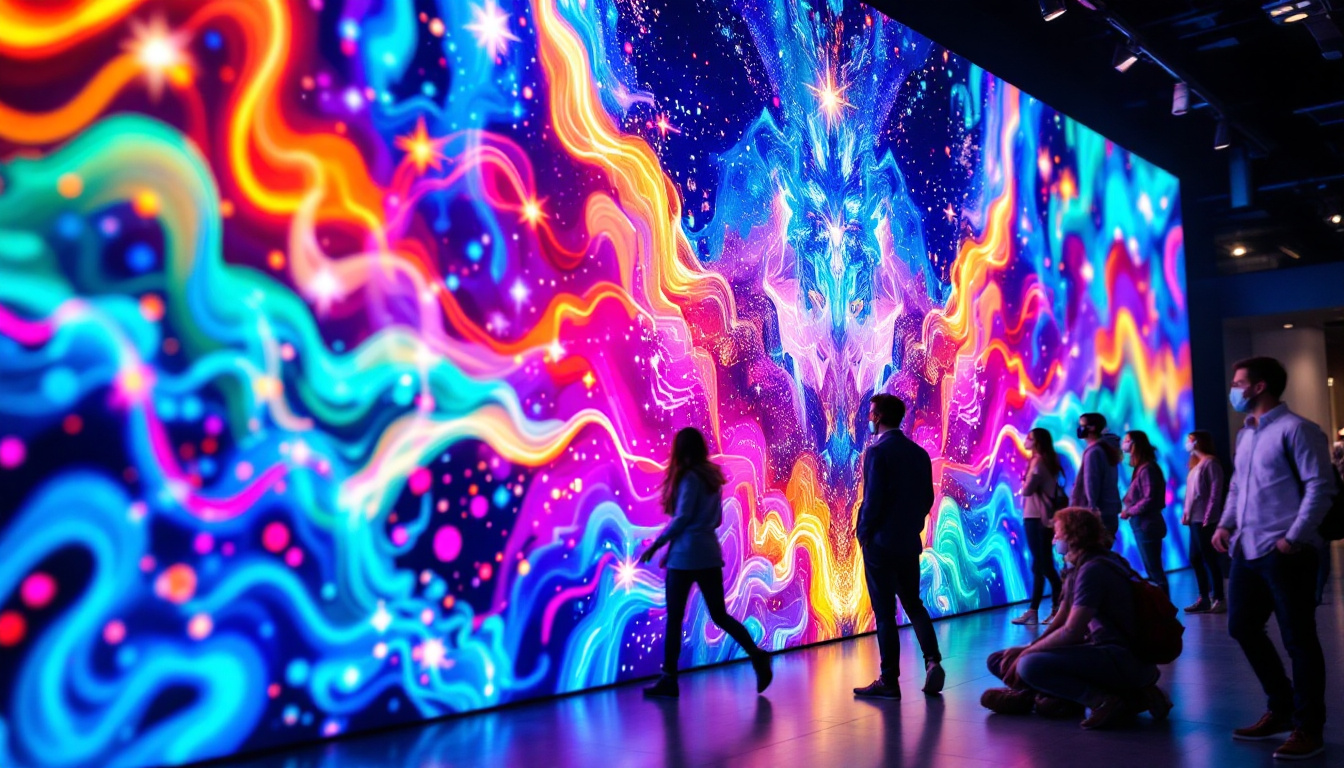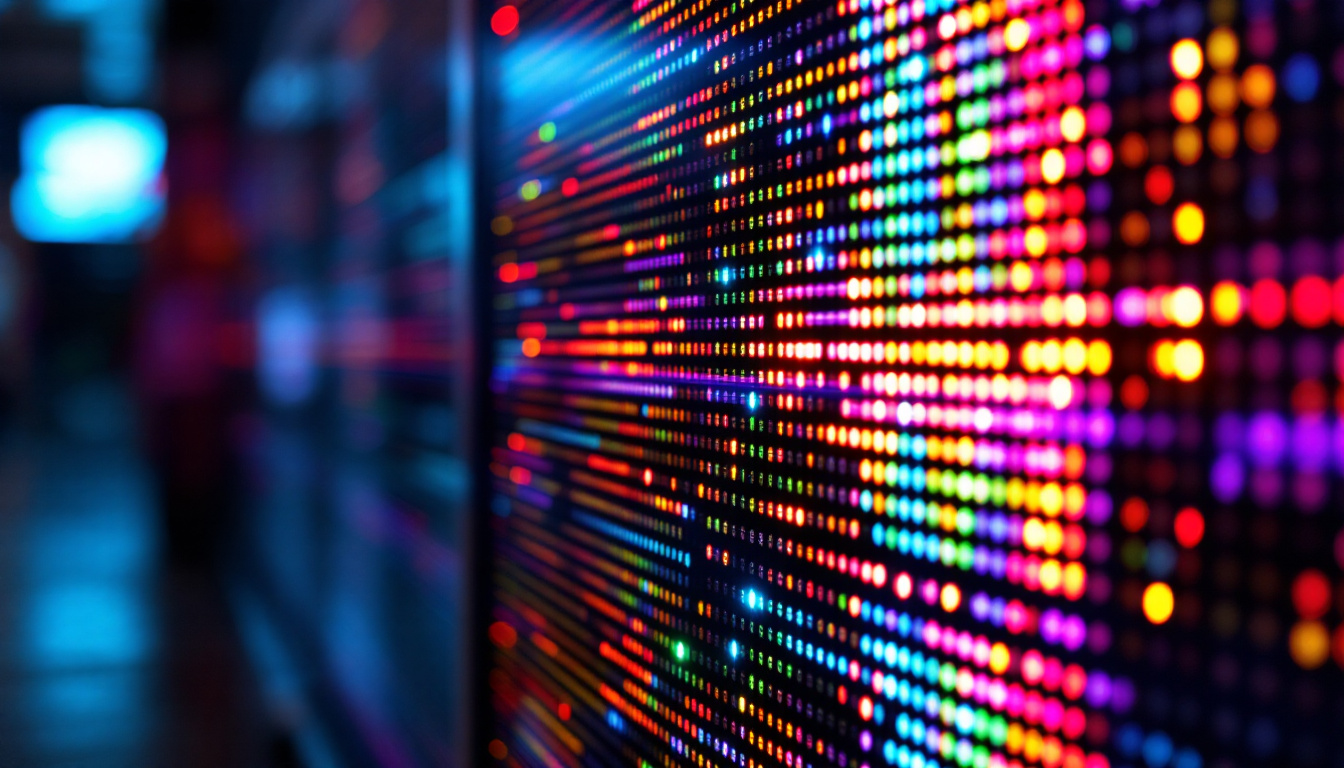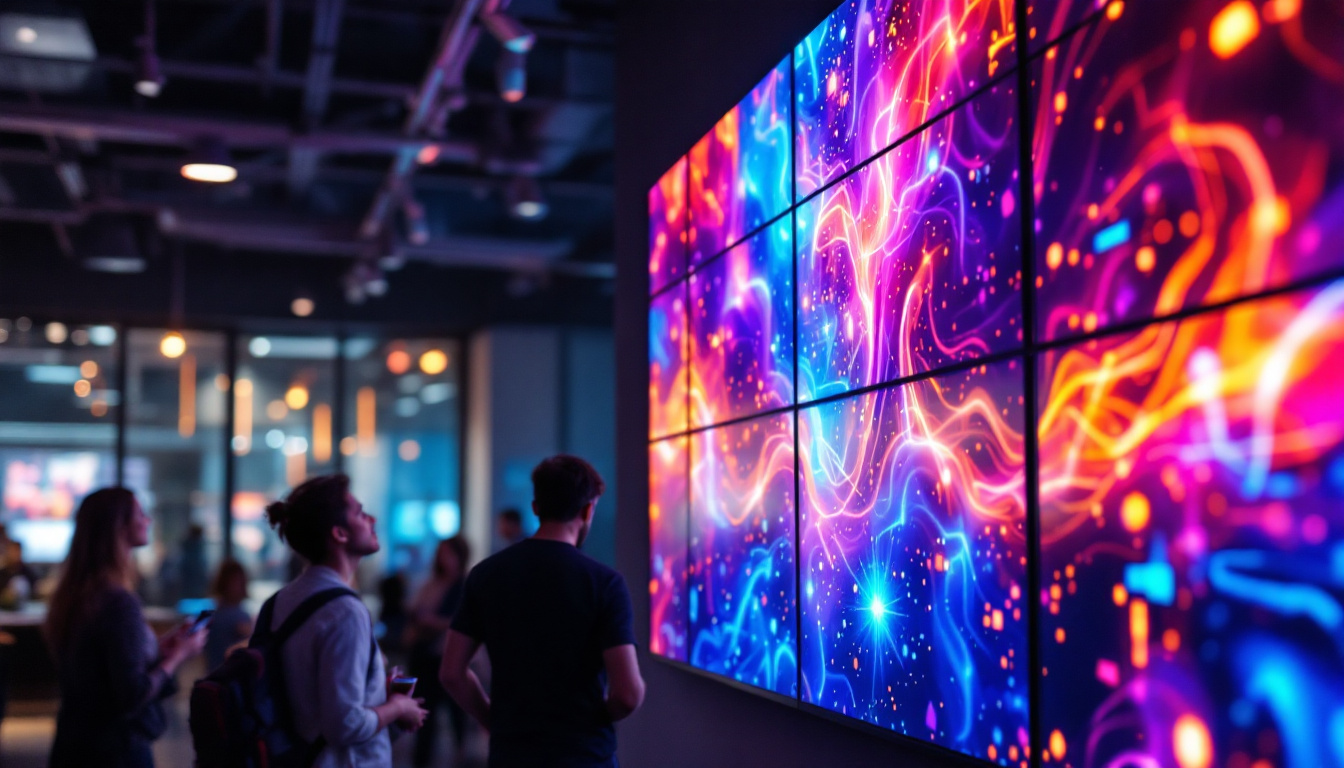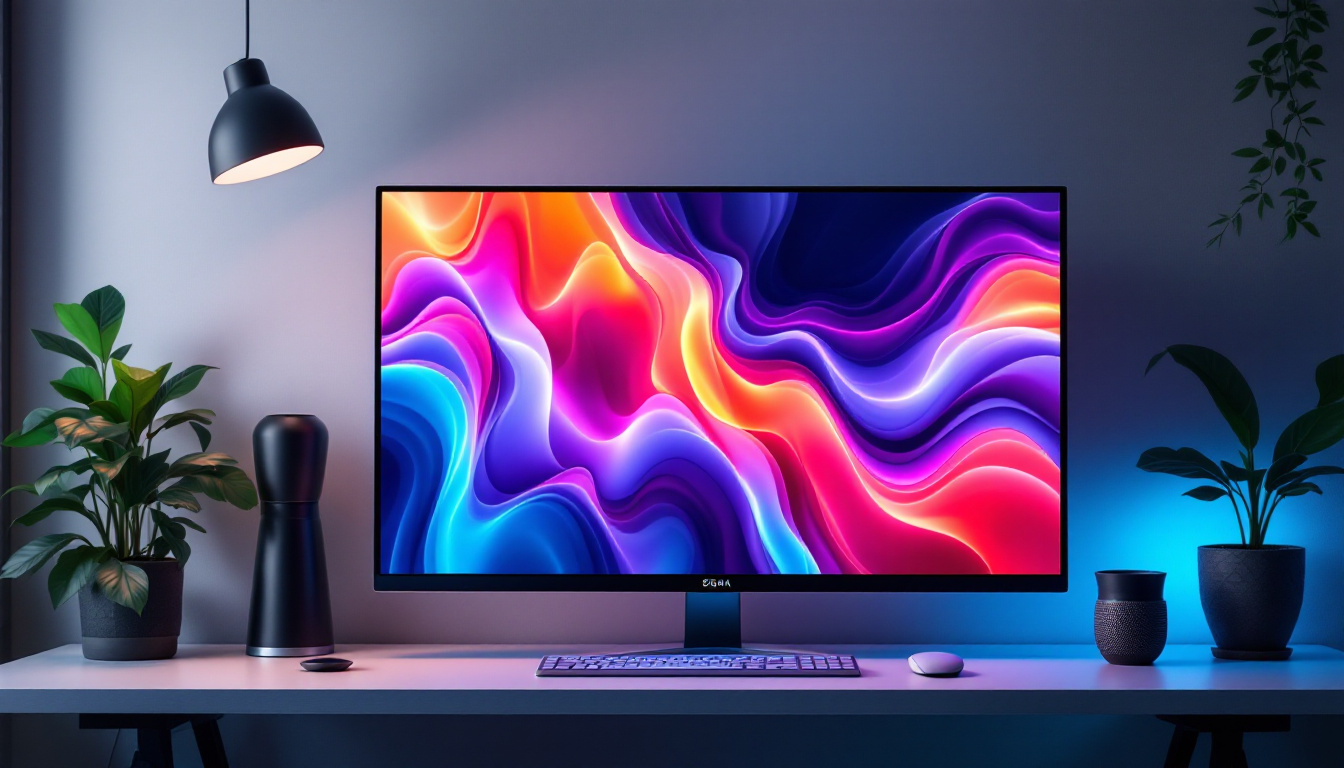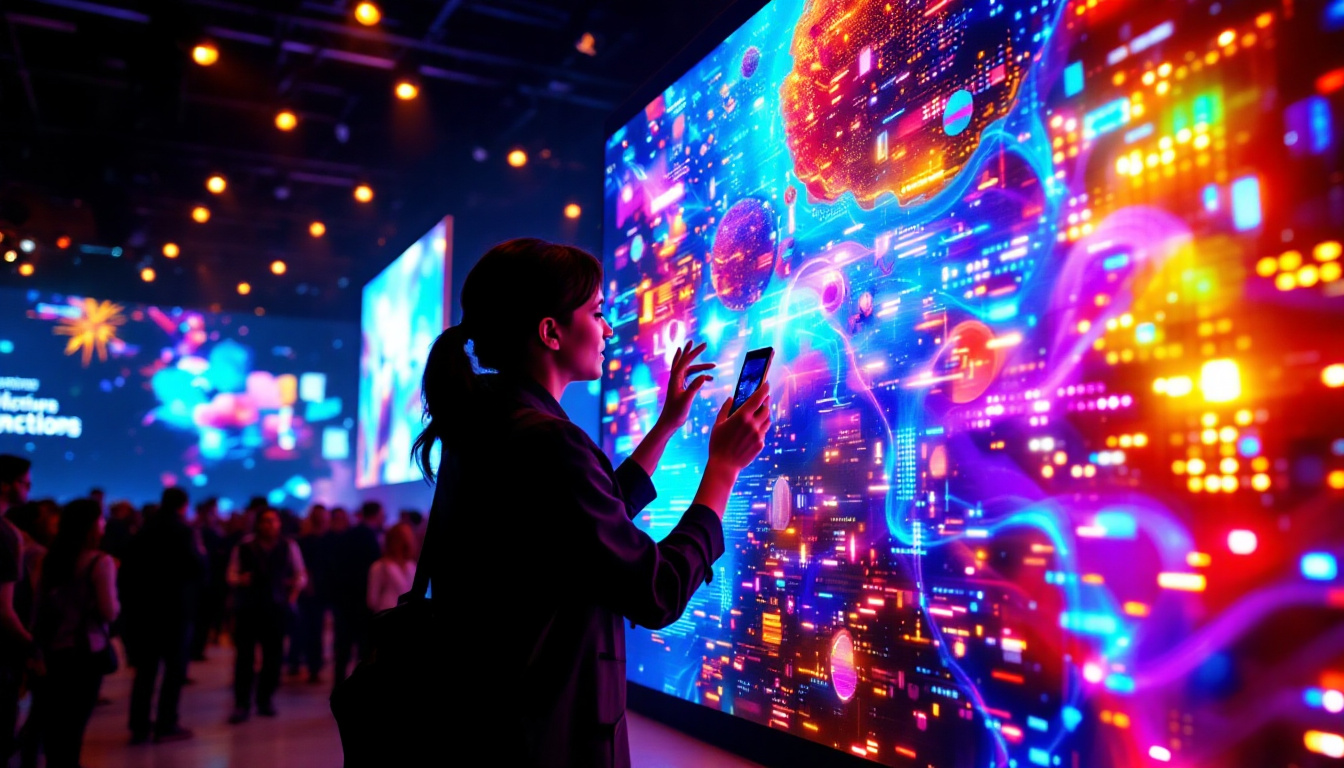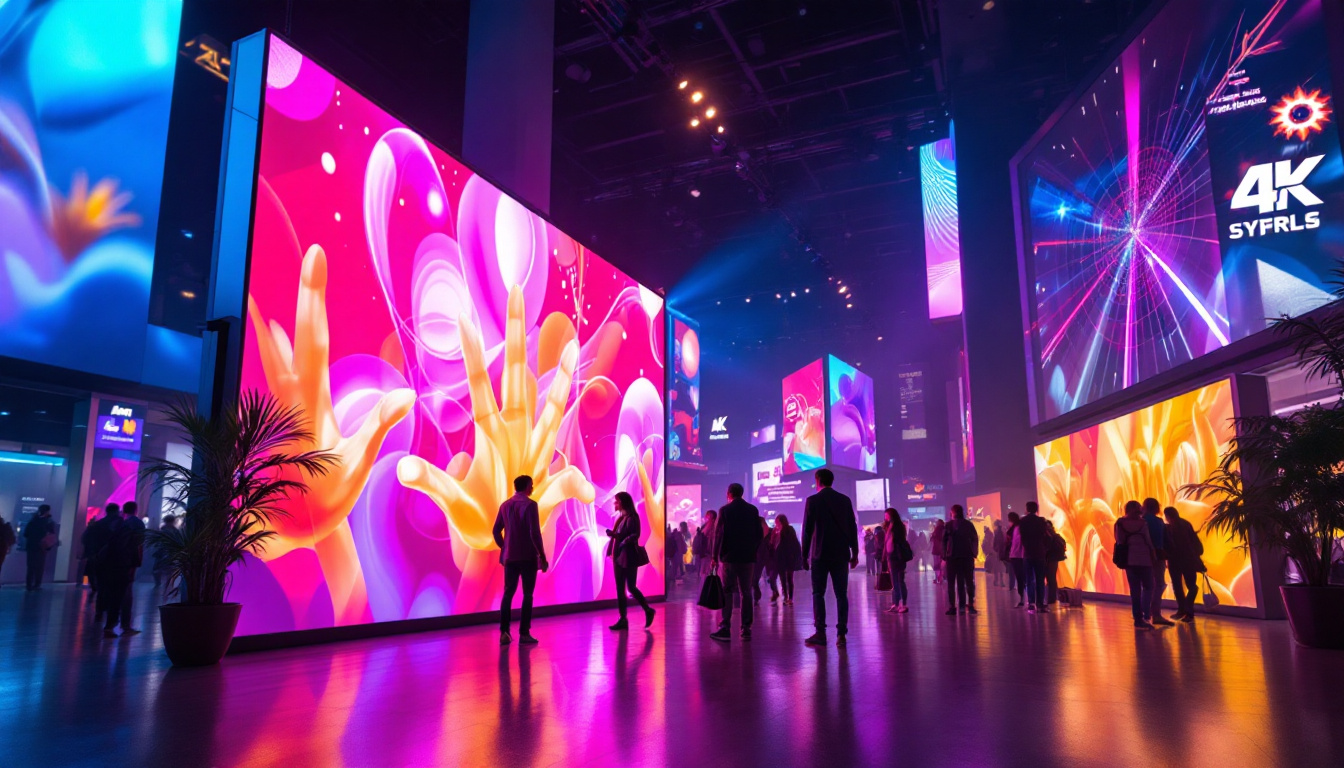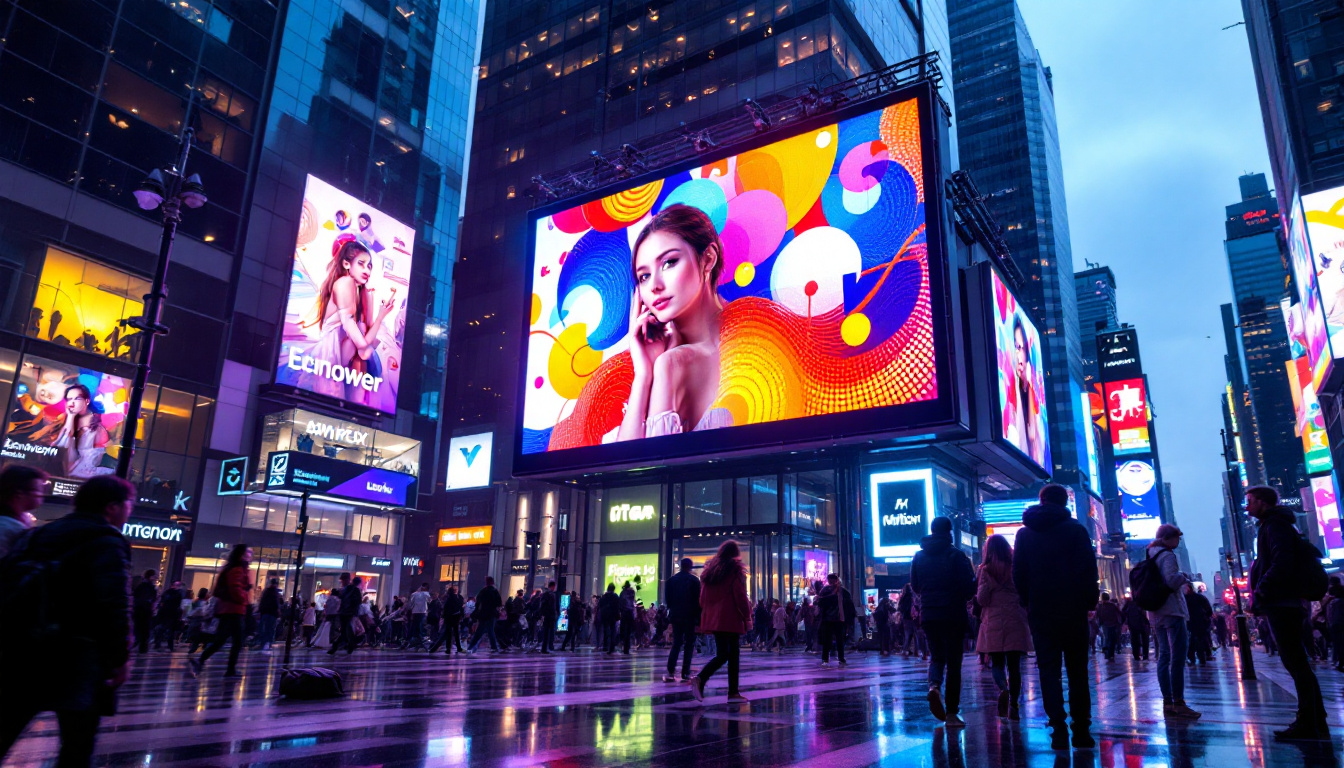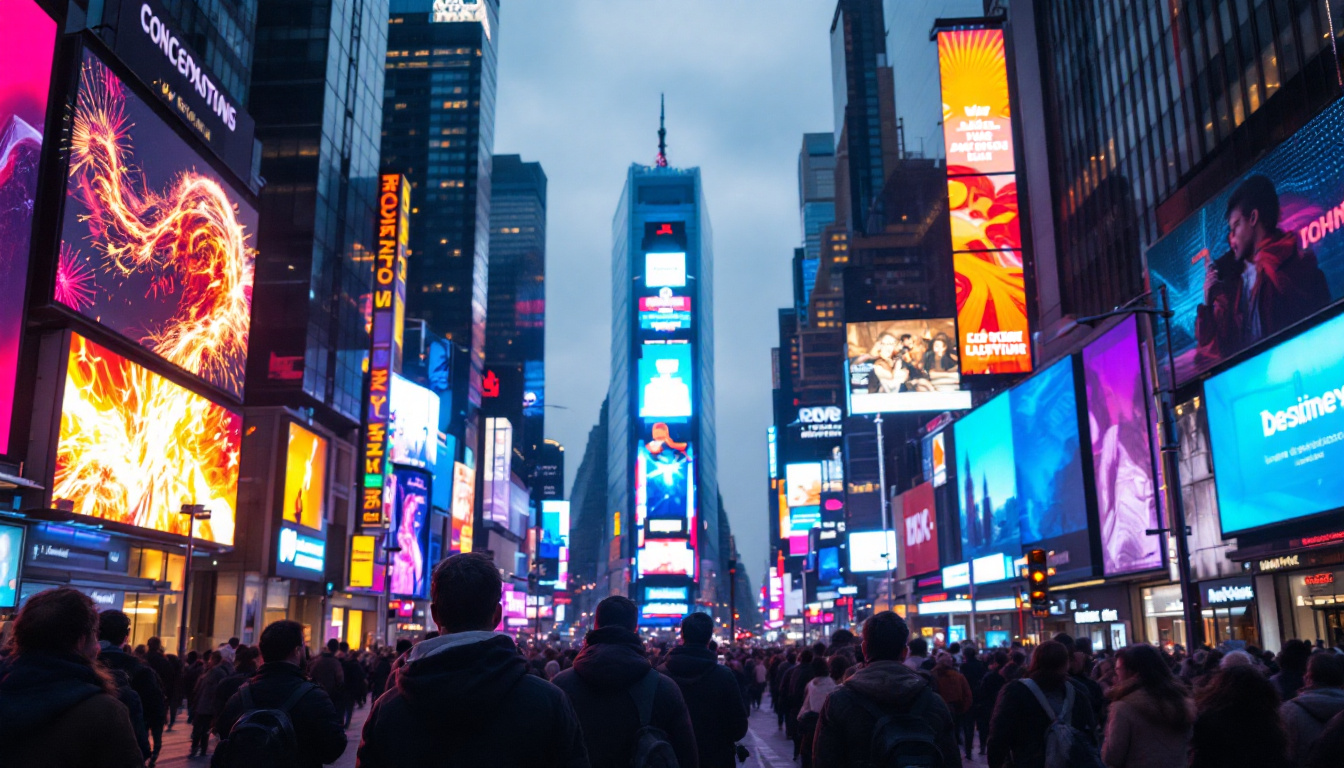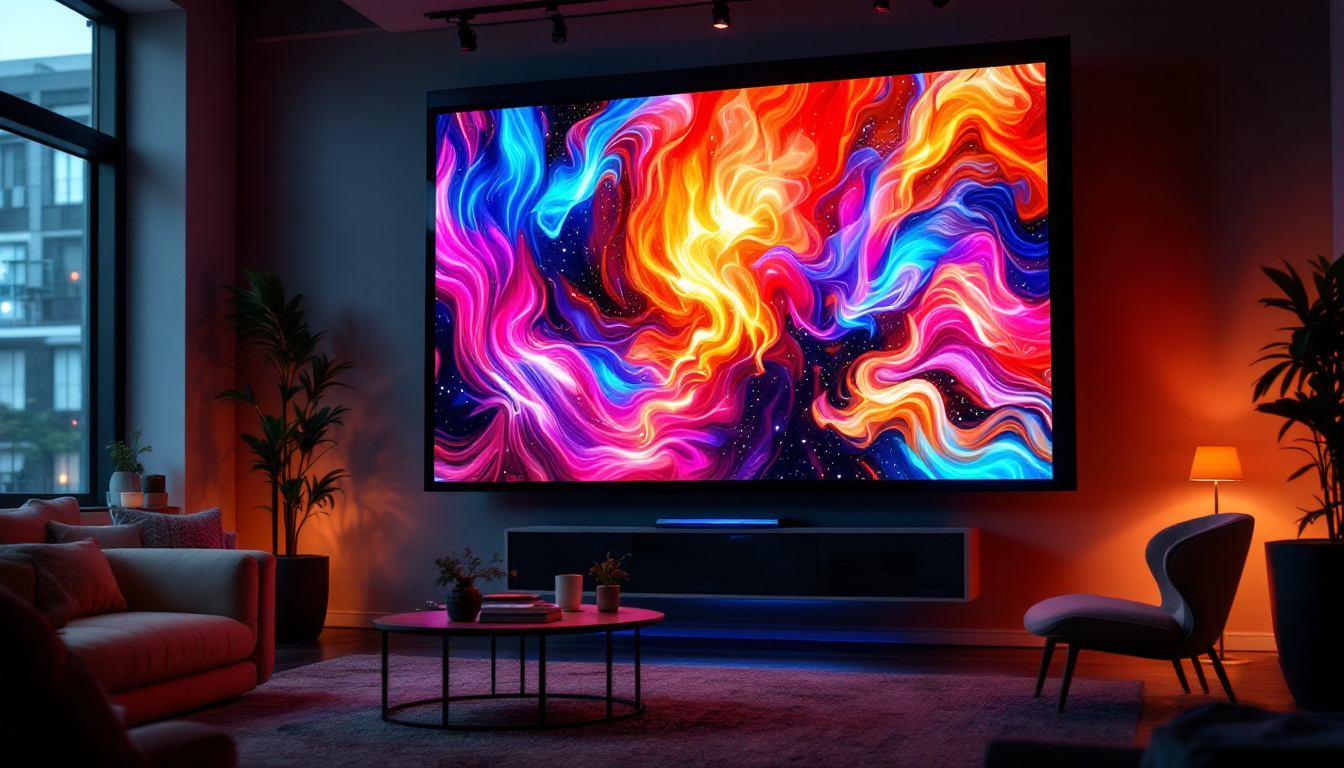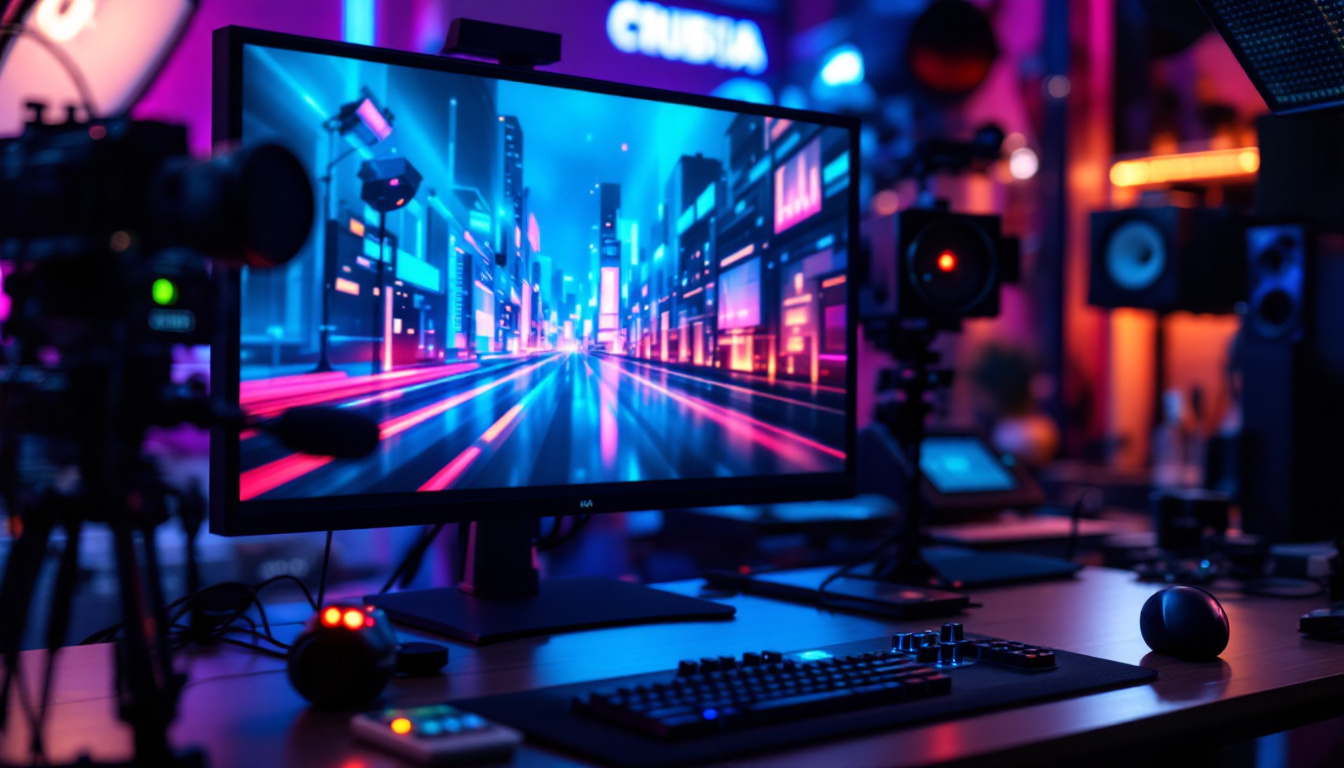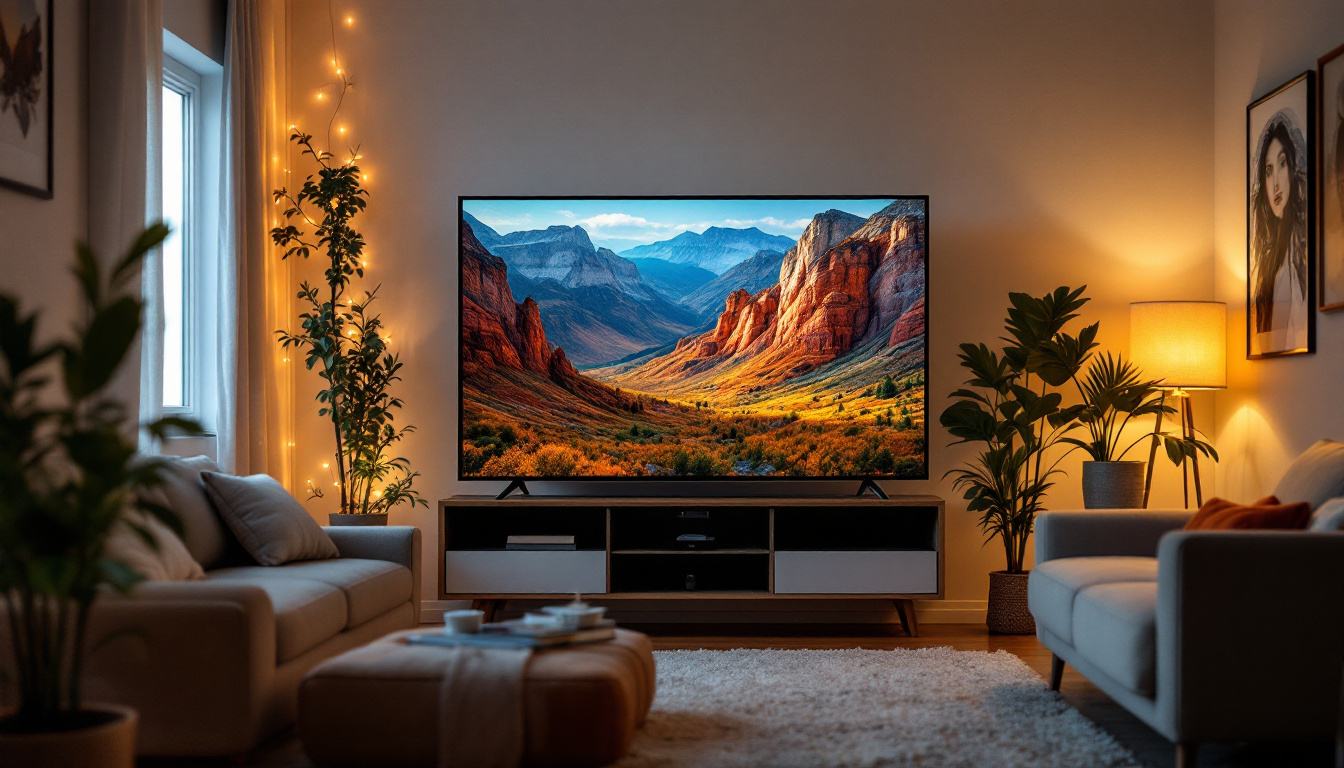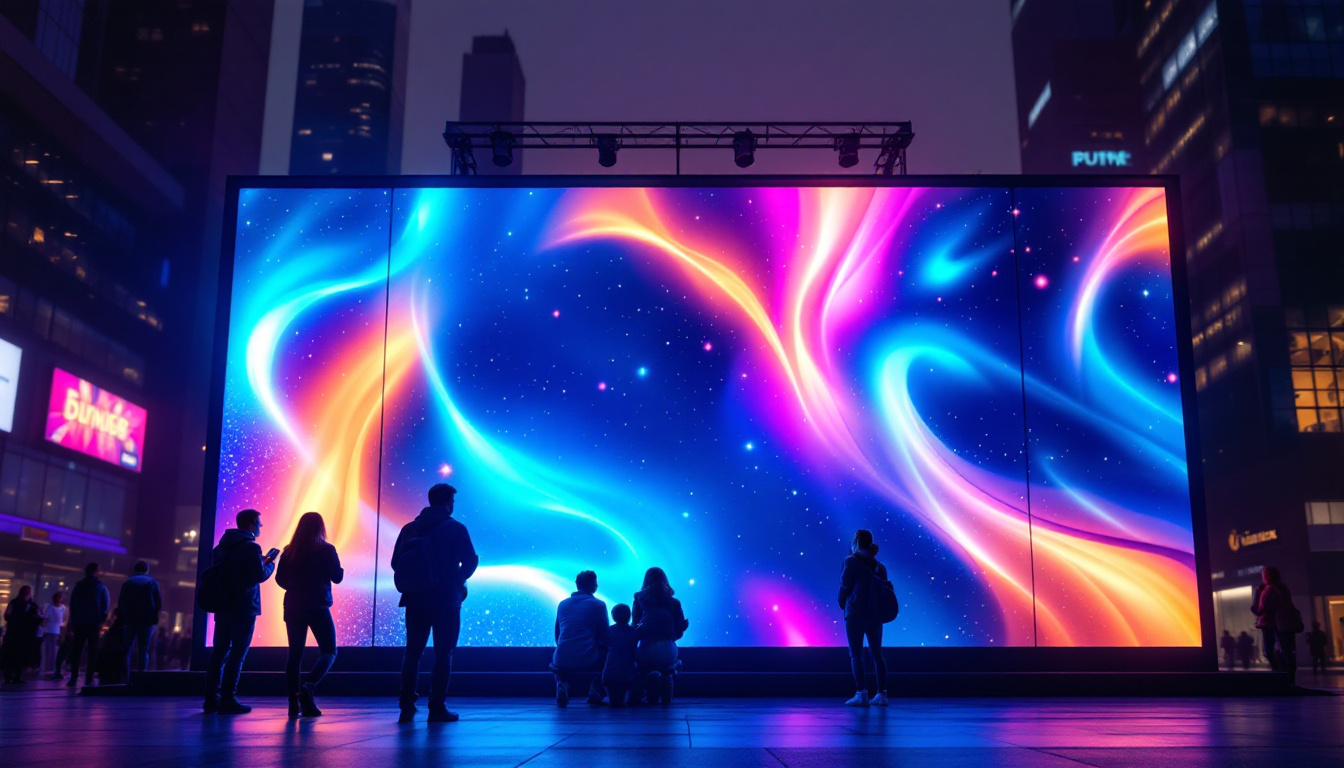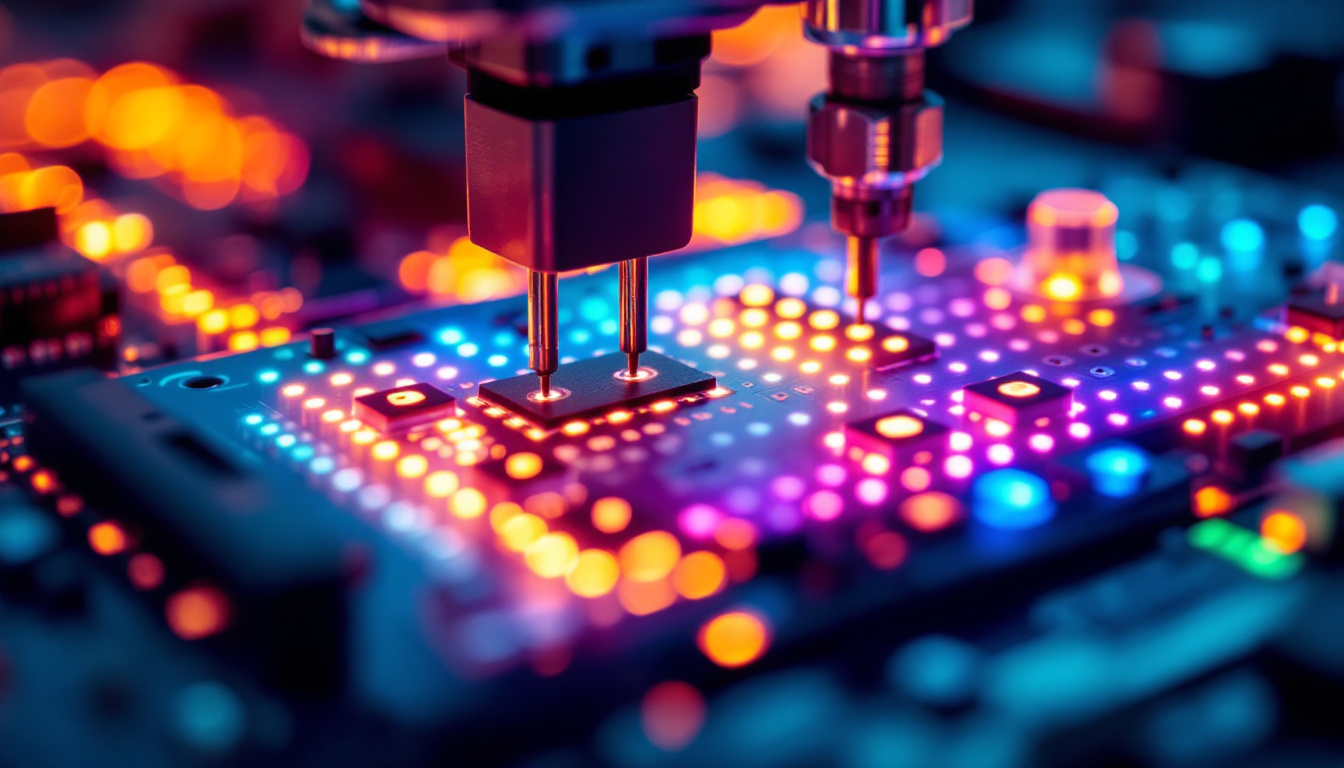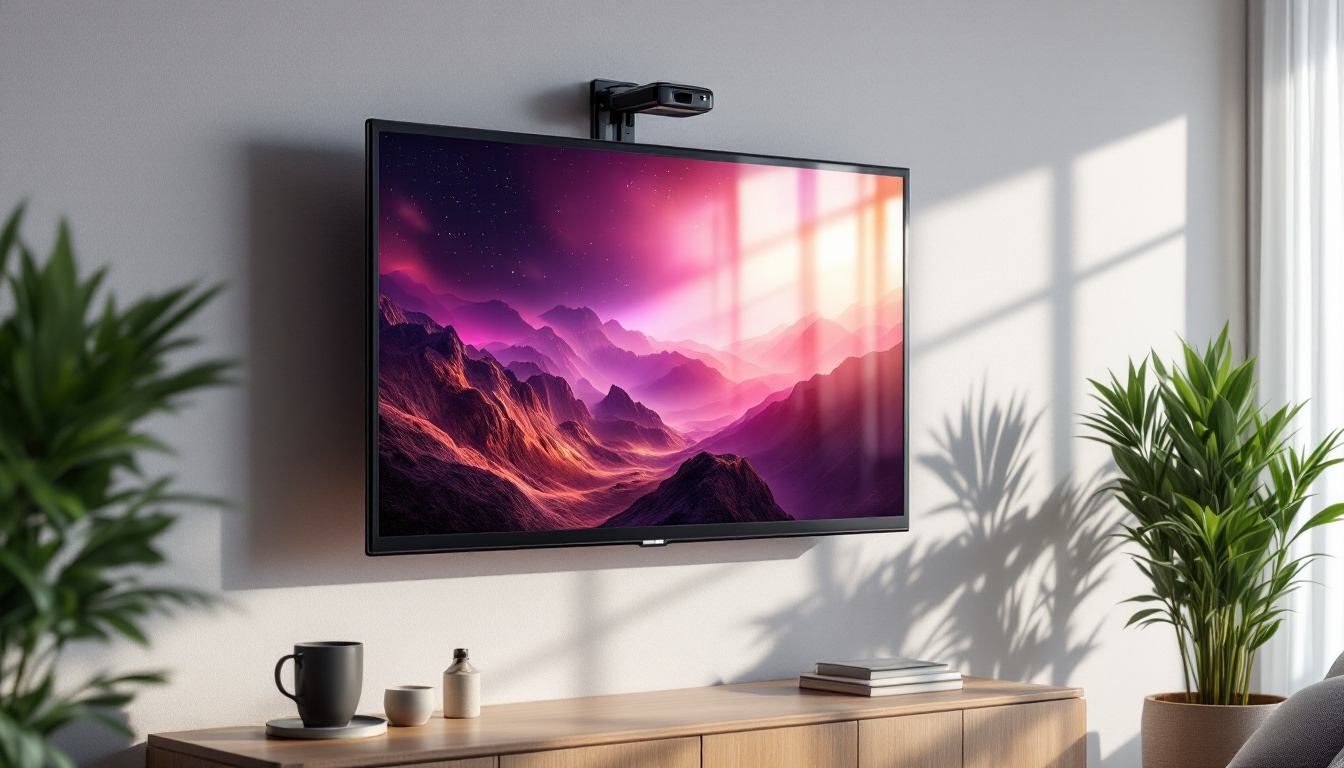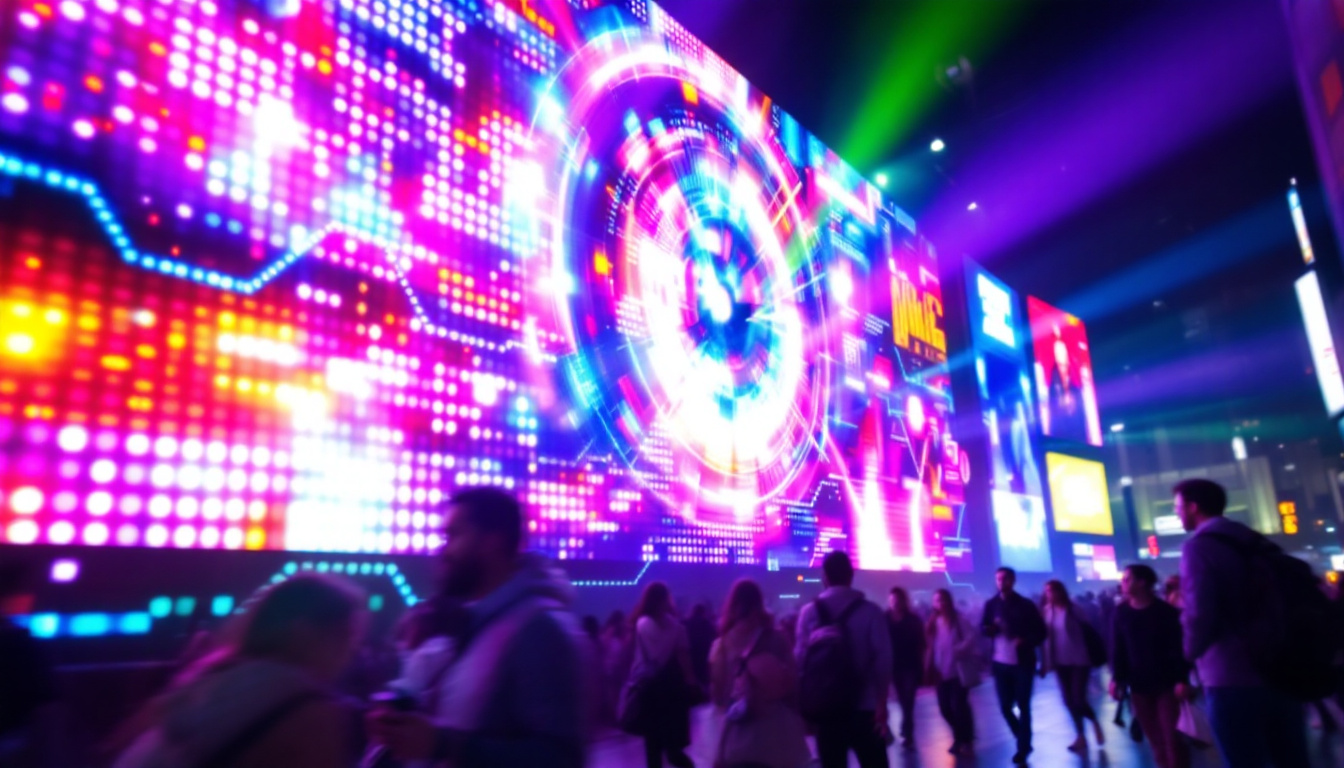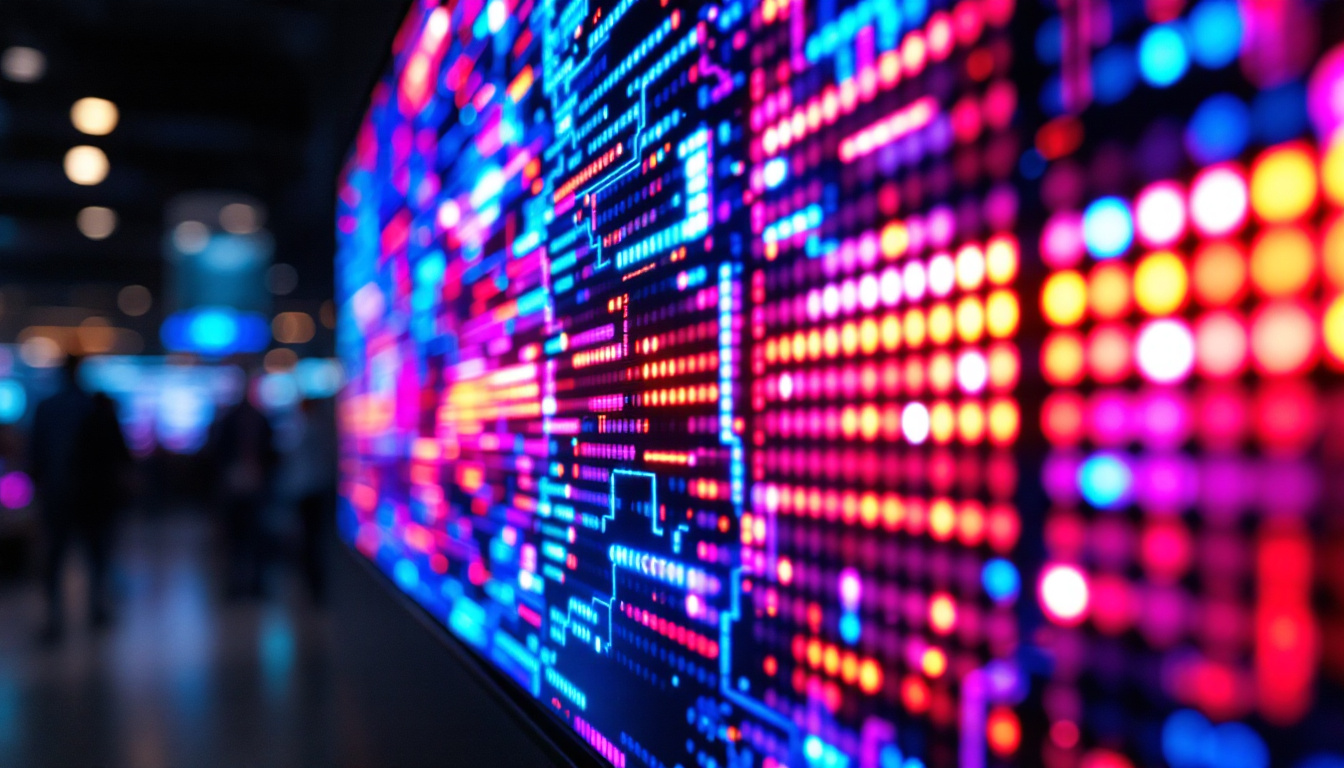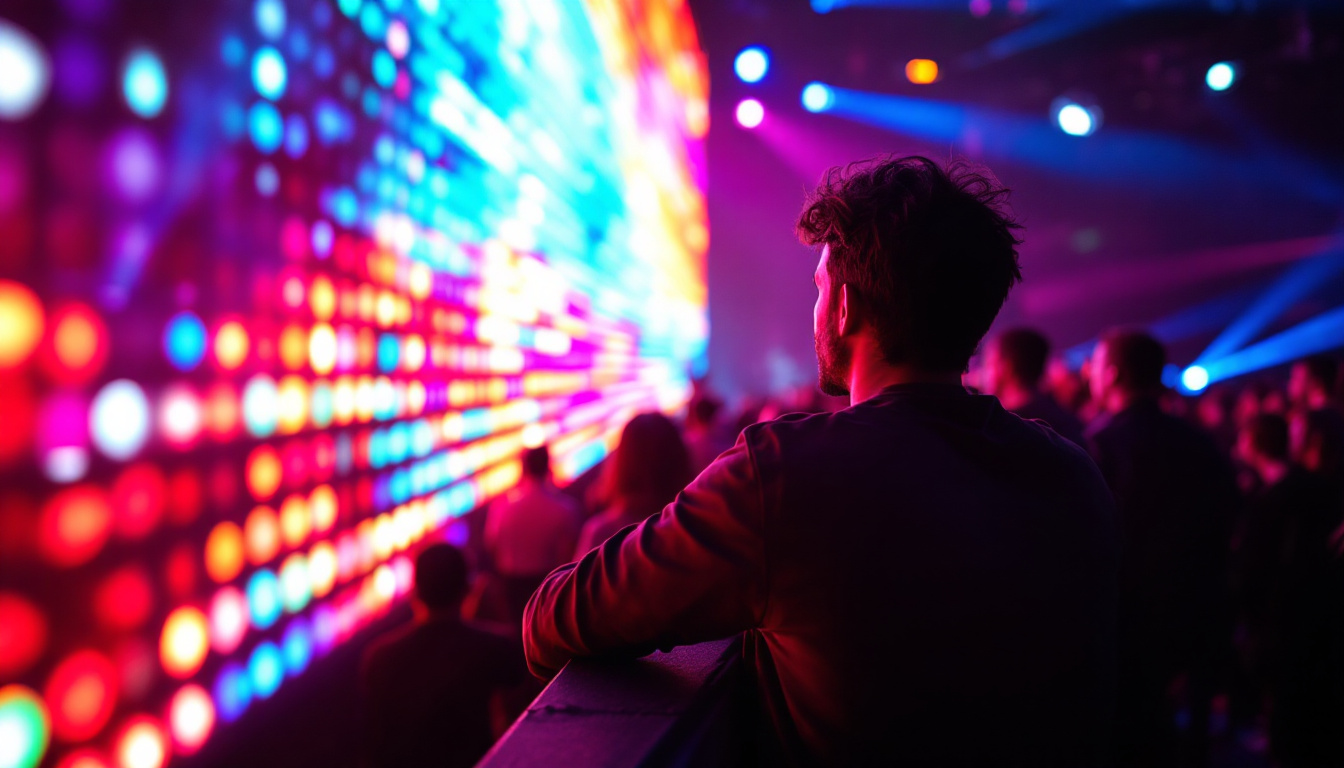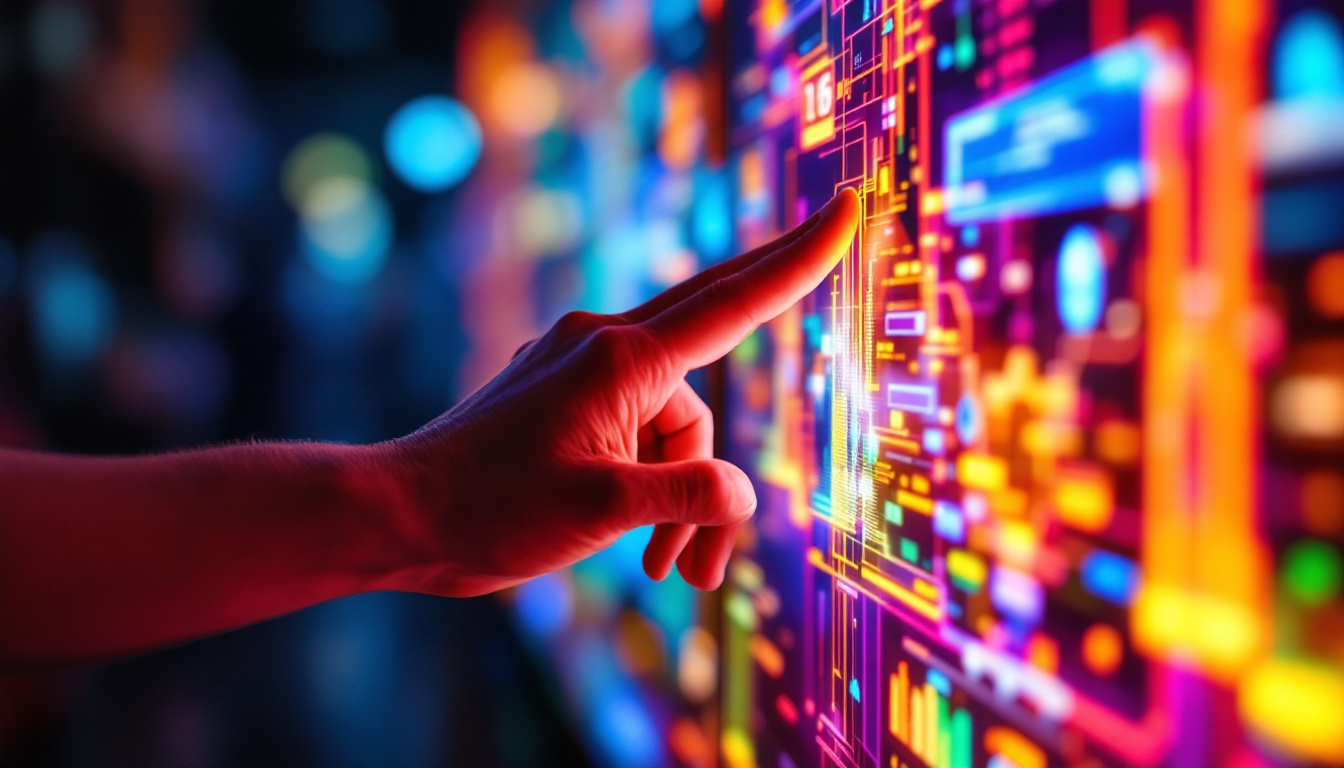In the world of audiovisual technology, LED displays have emerged as a dominant force, transforming how information is presented and consumed. From large-scale outdoor billboards to sleek indoor screens, LED technology has revolutionized visual communication. This article delves into the intricacies of LED displays, exploring their functionality, advantages, and applications.
Understanding LED Technology
LED, or Light Emitting Diode, is a semiconductor device that emits light when an electric current passes through it. This technology has become the backbone of modern display systems, offering a range of benefits over traditional display technologies such as LCD and plasma. The fundamental operation of an LED display revolves around the use of tiny diodes that produce light, allowing for vibrant colors and high contrast ratios. The efficiency of LED technology not only contributes to superior image quality but also significantly reduces energy consumption, making it an environmentally friendly option in an age where sustainability is increasingly prioritized.
How LED Displays Work
At the core of an LED display are individual pixels, each made up of red, green, and blue diodes. By adjusting the intensity of these three colors, a wide spectrum of colors can be produced. When combined, these pixels form a cohesive image that can be viewed from various angles. The arrangement of these pixels can vary, leading to different types of LED displays, such as direct view and backlit displays. The precision in how these pixels are controlled allows for dynamic content that can change in real-time, making LED displays particularly effective for applications that require immediate updates, such as news tickers or live event broadcasting.
In direct view LED displays, the diodes are positioned directly on the screen surface, allowing for brighter images and better viewing angles. This configuration is particularly advantageous in high ambient light conditions, where traditional displays may struggle to maintain visibility. Conversely, backlit LED displays use a layer of LEDs behind an LCD panel to illuminate the image, which can result in a thinner profile but may not achieve the same brightness levels as direct view displays. The backlighting technology has evolved significantly, with advancements like local dimming and edge-lit designs enhancing contrast and energy efficiency, thereby improving overall viewing experiences.
Types of LED Displays
LED displays can be categorized into several types based on their application and design. The most common types include:
- Indoor LED Displays: Designed for use in controlled environments, these displays are typically used in retail spaces, conference rooms, and entertainment venues. Their versatility allows for the integration of interactive features, making them ideal for engaging audiences in various settings.
- Outdoor LED Displays: Built to withstand the elements, outdoor displays are commonly used for advertising and information dissemination in public spaces. These displays often feature enhanced durability and weatherproofing, ensuring they remain functional and visually appealing in rain, snow, or intense sunlight.
- Transparent LED Displays: These innovative displays allow for visibility through the screen, making them ideal for retail environments where product visibility is essential. The transparent nature of these displays opens up new possibilities for creative advertising, enabling brands to showcase their products while simultaneously delivering dynamic visual content.
In addition to these common types, there are also specialized LED displays, such as flexible LED screens that can be curved or shaped to fit unique installations. These flexible displays are gaining popularity in creative applications like stage designs and immersive environments, where traditional rigid screens would be impractical. Furthermore, advancements in LED technology continue to evolve, with developments in microLED and miniLED technologies promising even finer resolutions and improved performance, setting the stage for the next generation of display solutions.
Advantages of LED Displays
LED displays offer a multitude of advantages that make them a preferred choice for many applications. Their unique properties contribute to superior performance and user experience.
High Brightness and Contrast
One of the standout features of LED displays is their ability to produce incredibly bright images. This is particularly beneficial in outdoor settings where sunlight can wash out the visibility of traditional displays. The high contrast ratios also enhance the clarity of images, making them more appealing to viewers. This capability is not just limited to outdoor use; in dimly lit environments, LED displays can still maintain vibrant colors and sharp details, ensuring that content remains engaging regardless of the lighting conditions. Furthermore, the ability to adjust brightness levels dynamically allows for optimal viewing experiences in various settings, from stadiums to retail spaces.
Energy Efficiency
LED technology is known for its energy efficiency. Compared to older display technologies, LED displays consume significantly less power, which not only reduces operational costs but also minimizes environmental impact. This efficiency is particularly important for large installations, where energy consumption can quickly add up. In addition to lower energy bills, many businesses are now prioritizing sustainability, and LED displays align perfectly with these values. By utilizing less energy, organizations can reduce their carbon footprint, making LED displays an eco-friendly choice that resonates with environmentally conscious consumers.
Longevity and Durability
LED displays are designed to last. With a lifespan of up to 100,000 hours, they outlast many traditional display options. Additionally, they are more resistant to damage from shocks and vibrations, making them suitable for various environments, including bustling urban areas and dynamic indoor settings. The robust construction of LED displays also means they can withstand extreme weather conditions, from intense heat to heavy rain, ensuring consistent performance over time. This durability not only translates to lower maintenance costs but also allows businesses to invest in displays that will serve them well for years without the need for frequent replacements. Moreover, the reduced need for replacement contributes to less electronic waste, further enhancing their appeal in a world increasingly focused on sustainability.
Applications of LED Displays
The versatility of LED displays allows them to be utilized in a wide array of applications. From advertising to entertainment, their presence is felt across numerous sectors.
Advertising and Marketing
In the advertising realm, LED displays have become a staple for marketers looking to capture consumer attention. Their vibrant colors and dynamic content capabilities make them ideal for billboards, storefronts, and event promotions. The ability to change content quickly and remotely allows businesses to adapt their messaging in real-time, maximizing engagement.
Entertainment and Events
LED displays play a crucial role in the entertainment industry. Concerts, festivals, and sporting events often feature large LED screens that enhance the audience’s experience. These displays can showcase live feeds, graphics, and interactive content, creating an immersive atmosphere that captivates attendees.
Corporate and Educational Use
In corporate settings, LED displays are used for presentations, video conferencing, and information sharing. Their clarity and brightness ensure that all participants can see the content, regardless of the lighting conditions. Similarly, educational institutions utilize LED displays for lectures and presentations, making learning more engaging and interactive.
Challenges and Considerations
While LED displays offer numerous advantages, there are also challenges and considerations that potential users should be aware of. Understanding these factors can help in making informed decisions.
Initial Costs
The initial investment for LED displays can be higher than for traditional display technologies. However, it is essential to consider the long-term savings associated with energy efficiency and durability. Over time, the reduced maintenance and replacement costs can offset the initial expenditure.
Viewing Angles
Although LED displays provide excellent brightness and contrast, their viewing angles can vary depending on the type of display. Direct view LED displays generally offer better viewing angles compared to backlit displays. Careful consideration of placement and audience positioning is crucial to ensure optimal visibility.
Future Trends in LED Display Technology
The landscape of LED display technology is continually evolving, with new innovations on the horizon. Understanding these trends can provide insight into the future of visual communication.
Advancements in Resolution
As technology progresses, the demand for higher resolution displays continues to grow. The introduction of microLED technology promises to deliver even finer pixel densities, resulting in sharper images and enhanced color accuracy. This advancement could redefine the standards for display quality across various applications.
Integration with Smart Technology
The integration of LED displays with smart technology is another exciting trend. With the rise of the Internet of Things (IoT), LED displays can be connected to networks, allowing for real-time data updates and interactive content. This capability enhances the user experience and opens up new possibilities for engagement.
Sustainability Initiatives
As environmental concerns become more pressing, manufacturers are focusing on creating sustainable LED displays. This includes using eco-friendly materials, reducing energy consumption, and implementing recycling programs for old displays. These initiatives not only benefit the planet but also appeal to environmentally conscious consumers.
Conclusion
LED displays have undeniably transformed the audiovisual landscape, offering unparalleled brightness, energy efficiency, and versatility. As technology continues to advance, the potential applications for LED displays will only expand, making them an integral part of modern communication strategies. Whether for advertising, entertainment, or corporate use, LED displays stand out as a powerful tool for conveying information and capturing attention.
Understanding the intricacies of LED technology, its advantages, and its applications can empower businesses and organizations to make informed decisions about their display needs. As the industry progresses, staying abreast of trends and innovations will ensure that users can leverage the full potential of LED displays in their respective fields.
Explore Cutting-Edge LED Display Solutions with LumenMatrix
As you consider the vast potential and benefits of LED displays for your business or project, LumenMatrix stands at the forefront of this transformative technology. With a commitment to innovation and quality, LumenMatrix offers an extensive range of LED display solutions, from Indoor and Outdoor LED Wall Displays to specialized options like Vehicle LED Displays, LED Sports Displays, and Custom LED Displays. Embrace the future of visual communication and create immersive experiences that captivate your audience. Check out LumenMatrix LED Display Solutions today and see how our advanced technology can elevate your brand visibility and engagement.

